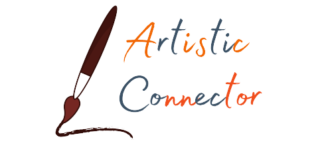Educators, parents, and community leaders strive to ensure that children in their homes, schools, and communities receive the best possible education. In the ideal world, a student graduates with an elevated and open mind, having been exposed to people, places, and objects that she would otherwise never have encountered. The student body should be diverse and well integrated so that students regularly interact with people from different backgrounds.
Taking the Scientific Rationalist approach from the last post, it is clear that art education has the same aims. Art educators try to teach students how to perceive the visual world, resulting in an elevated, open mind.
We know this is not often the case. This post will investigate how gender and racial inequality affect and are affected by education, with a specific focus on art education. Rather than elevating students beyond their initial discriminating and alienating beliefs, education reproduces the inequality seen in society for almost all demographics. White men, white women, and black men come out of the education system with reinforced notions of their place in society as dictated by the discrimination and inequality seen in society as a whole. The exception is black women, who have the opposite experience1. What measures are being taken to fix this? And what can we do going forward?
One approach in education as a whole, but particularly in art education, is multiculturalism. Art educators discuss the art traditions of many cultures in the hopes that they will be considered just as valid as the traditional canon of Greco-Roman to Renaissance to Impressionism to Post-Expressionism to Modern to Post-Modern (with other styles and periods intermixed as well) that is so dominated by white men. However, educators often get in their own way when taking an multiculturalist approach. They often sanitize the struggles of people who have been oppressed and subjugated and who have used art to showcase that struggle2. Additionally, educators need to be aware of their own biases and institutional biases in terms of gender and race. Classifying a form of art as “ethnic” or “primitive” is the norm, but these terms include an inherent judgment3. Thus, multiculturalism often becomes a well-intentioned approach that does not actually help students overcome inequality and in fact may end up contributing to the reproduction of inequality seen from graduating students.
Not only is inequality unfair and wrong, when we look at it through an art-focused lens, it becomes clear that social inequality decreases the cultural participation in communities4. At first glance, we might think that a wealthy patron class would result in more art creation and more art consumption. However, with more social equality, there are more large groups that consume art, so art creation and consumption increases. This makes sense: artists are more likely to find an audience for their art, especially if they’re creating art that is not typically consumed by that wealthy patron class.
If art educators do more to elevate students and erase inequality in schools, both in the student body and in the content they’re teaching, it will help to lead to more equality in society and therefore more art creation and consumption in our communities. This means teaching art from a variety of cultures, presenting them as equally valid. It means celebrating cultures while also explaining the struggles they have faced. And it means being aware of how the lessons taught are impacting the students so that they do not graduate with reinforced notions of their “place.” Creating more equality is not just the job of educators. Parents, museums, and communities are also responsible. By working together, we can create a more equal society and, as a result, see an increase in art creation and consumption.
- “For Whom Does Education Enlighten? Race, Gender, Education, and Beliefs about Social Inequality,” 25.
- Dipti Desai, “The Challenge of New Colorblind Racism in Art Education,” Art Education 63, no. 5 (September 2010): 22–28.
- Amelia Kraehe, “Multicultural Art Education in an Era of Standardized Testing: Changes in Knowledge and Skill for Art Teacher Certification in Texas,” Studies in Art Education 51, no. 2 (January 2010): 162–75
- Peter M. Blau et al., “Social Inequality and Art Institutions,” Sociological Forum 1, no. 4 (1986): 561–85


Pingback: Simone Leigh Named First Black Woman to Venice Biennale | Artistic Connector